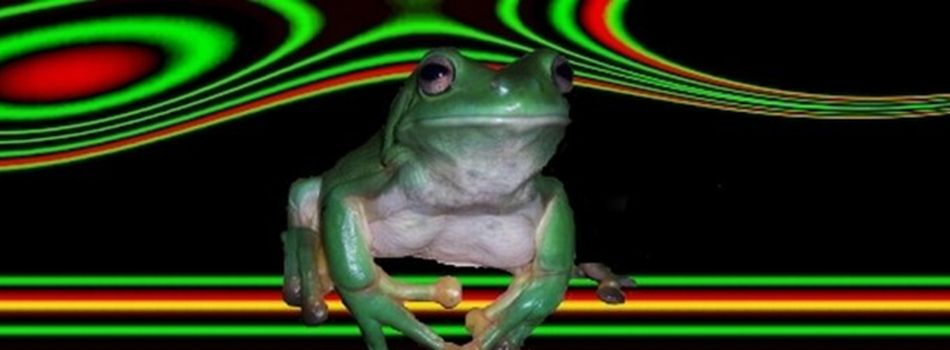The Australian green tree frog (Ranoidea caerulea/Litoria caerulea), also known as White’s tree frog, is one of the most popular pet frogs worldwide. Native to Australia and New Guinea, this bright green amphibian has become a favorite for beginners and experienced reptile and amphibian keepers alike. Its popularity comes from a combination of personality, appearance, ease of care, and its role as an excellent “starter species” for those interested in amphibian keeping.
Calm Temperament and Friendly Nature
Unlike many frogs that are shy and easily stressed, Australian green tree frogs are known for their calm and tolerant behavior. They often remain visible in their enclosures, perched on branches or hides, and many will adapt to human presence over time. Their “smiling” faces and gentle demeanor make them especially appealing to families and first-time amphibian owners.
Striking Appearance and Manageable Size
Green tree frogs are admired for their vivid emerald skin, which can range from bright green to olive brown depending on mood and environment. Their large eyes and chunky bodies give them a unique, cartoon-like charm. At an adult size of 7–11 centimeters (2.7–4.3 inches), they are large enough to be engaging but still manageable in modest enclosures, making them a top choice among pet frog species.

Beginner-Friendly Care Requirements
One of the main reasons Australian green tree frogs make great pets is their relatively forgiving care needs compared to other amphibians. With the right setup, they thrive in home terrariums:
-
Temperature: 23–27°C (73–81°F) by day, dropping to 20–23°C (68–73°F) at night.
-
Humidity: Moderate levels (50–70%) with daily misting and good ventilation.
-
Enclosure: A vertical terrarium with branches, plants, and hiding spots to encourage natural climbing behavior.
-
Diet: Gut-loaded crickets, roaches, and the occasional treat, dusted with calcium and vitamins.
With proper care, these frogs can live 10–15 years in captivity, with some reaching 20 years, making them one of the longest-lived pet frogs available.
Educational and Conservation Value
Beyond being fascinating pets, green tree frogs are excellent for teaching children and students about amphibian life cycles, metamorphosis, and environmental conservation. Since most pet frogs sold today are captive-bred, keeping them reduces pressure on wild populations while promoting ethical and sustainable ownership.
Responsible Ownership Matters
While they are hardy, Ranoidea caerulea or Litoria caerulea still require responsible care. Amphibian skin is delicate and highly absorbent, so handling should always be minimal and done with clean, wet hands or gloves. Potential owners should also research local regulations, as some regions require permits for amphibian keeping. Proper hygiene, quarantine of new animals, and access to amphibian-experienced veterinarians are also important to prevent health issues and disease spread.
Conclusion
The Australian green tree frog stands out as one of the best choices for anyone considering a pet amphibian. Its calm personality, attractive looks, and beginner-friendly care needs have earned it a reputation as a top pet frog species. Whether you are new to amphibians or looking for an engaging and educational companion, Ranoidea caerulea or Litoria caerulea offers a long-lived, rewarding experience that fosters appreciation for amphibians and their vital role in our ecosystems.
